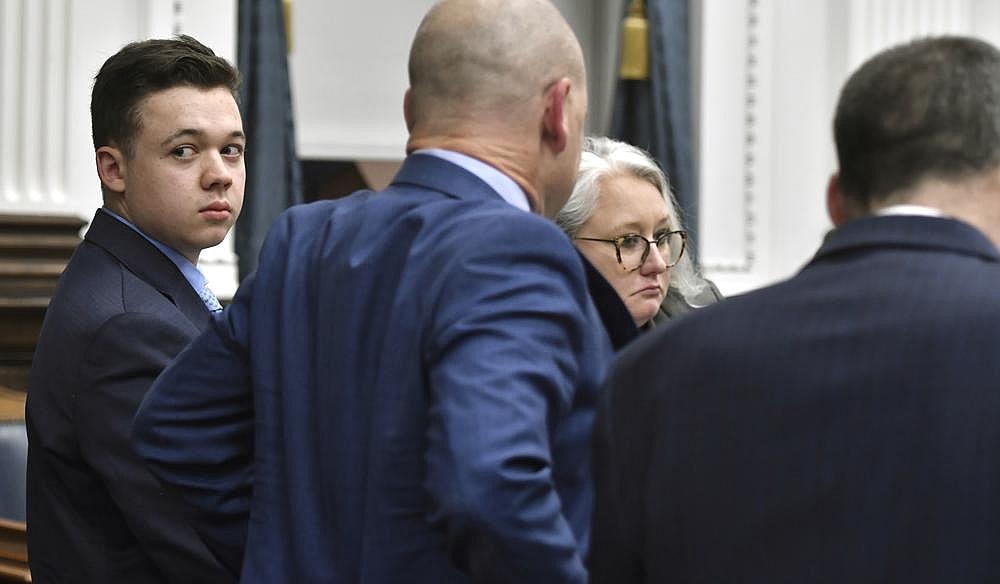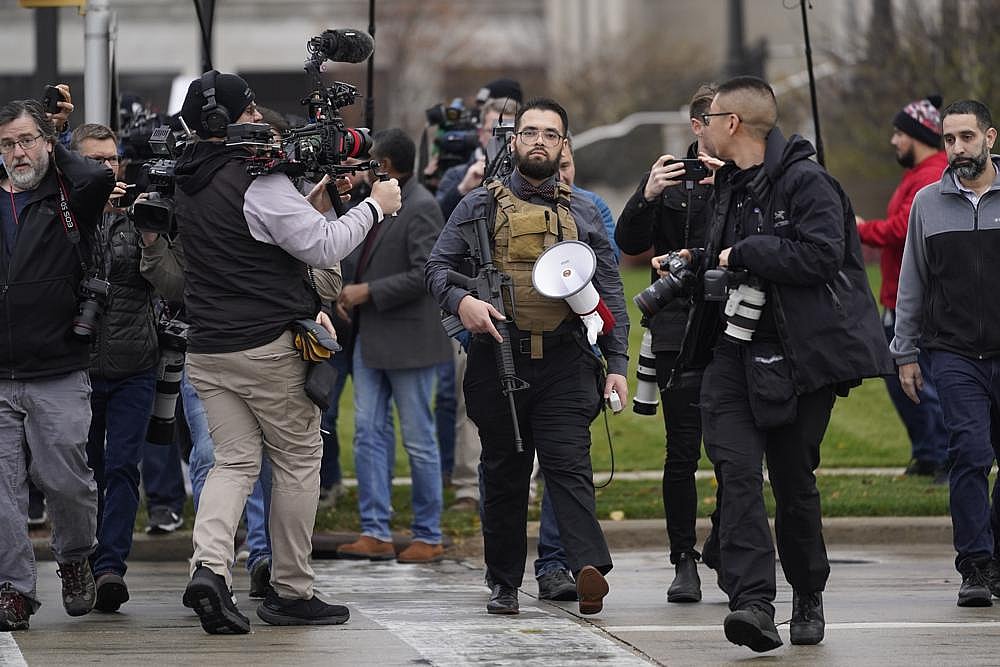Jurors weighing charges against Kyle Rittenhouse returned Wednesday for a second day of deliberations in his murder trial after failing to reach a swift verdict on whether he was the instigator of a night of bloodshed in Kenosha or a concerned citizen who came under attack while trying to protect property.
About two hours into deliberations on the second day, jurors asked to view video presented at the trial and the judge said he would determine the procedures to allow that.
Prosecutor Thomas Binger said they should be able to view any video they wanted as many times as they wanted, while defense attorney Mark Richards said he would object to the jury viewing video taken by a drone that prosecutors said showed Rittenhouse pointing his gun at protesters before the shootings.
The jury of 12 deliberated for a full day Tuesday without reaching a decision.

The case went to the anonymous jury after Judge Bruce Schroeder, in an unusual move, allowed Rittenhouse himself to play a minor role in selecting the final panel of 12 who would decide his fate. Rittenhouse reached into a raffle drum and drew numbered slips that determined which of the 18 jurors who sat through the case would deliberate and which ones would be dismissed as alternates.
That task is usually performed by a court clerk, not the defendant. Schroeder said he has been having defendants do it for “I’m going to say 20 years, at least.”
Though protests have been generally muted around the courthouse during the trial, on Wednesday a man arrived carrying a long rifle and wearing what appeared to be body armor. After being approached by police, he left and returned a short time later without the gun. The man had spent Tuesday shouting anti-Black Lives Matter statements through a megaphone and was involved in a confrontation that day with another protester.
Rittenhouse, 18, faces life in prison if convicted on the most serious charge for using an AR-style semi-automatic rifle to kill two men and wound a third during a night of protests against racial injustice in Kenosha in the summer of 2020. The former police youth cadet is white, as were those he shot.
Rittenhouse testified he acted in self-defense, while prosecutors argued he provoked the violence. The case has become a flashpoint in the U.S. debate over guns, racial-justice protests, vigilantism and law and order.

The jury appeared to be overwhelmingly white. Prospective jurors were not asked to identify their race during the selection process, and the court did not provide a racial breakdown.
As the jury deliberated, dozens of protesters — some for Rittenhouse, some against — stood outside the courthouse. Some talked quietly with those on the other side, while others shouted insults. One woman could be heard repeatedly calling some Rittenhouse supporters “white supremacists.”
Wisconsin Gov. Tony Evers, who faced criticism over his response to the Kenosha protests in 2020, urged calm as the jury deliberated. He announced last week that 500 members of the National Guard would stand ready for duty in Kenosha if needed.
“Regardless of the outcome in this case, I urge peace in Kenosha and across our state,” Evers tweeted. He added: “I ask all those who choose to assemble and exercise their First Amendment rights in every community to do so safely and peacefully.”
The large protests that some had anticipated did not materialize during the trial’s testimony phase. On most days, only a few demonstrators gathered on the courthouse steps, and the high fence that protected the building during last year’s unrest is gone.
Rittenhouse was 17 when he went to Kenosha from his home in Antioch, Illinois, in what he said was an effort to protect property from rioters in the days after a Black man, Jacob Blake, was shot by a white Kenosha police officer.

In a fast-moving series of clashes in the streets, Rittenhouse shot and killed Joseph Rosenbaum, 36, and Anthony Huber, 26, and wounded Gaige Grosskreutz, now 28.
During closing arguments Monday, prosecutor Thomas Binger said that Rittenhouse was a “wannabe soldier” who set the deadly chain of events in motion by bringing a rifle to a protest and pointing it at protesters just before he was chased.
But Rittenhouse lawyer Mark Richards countered that Rittenhouse was ambushed by a “crazy person” — Rosenbaum.
Rittenhouse testified that Rosenbaum chased him down and made a grab for his rifle, causing him to fear the weapon was going to be used against him. His account of Rosenbaum’s behavior was largely corroborated by video and some of the prosecution’s own witnesses.
As for Huber, he was gunned down after he was seen on video hitting Rittenhouse with a skateboard. And Grosskreutz admitted he had his own gun pointed at Rittenhouse when he was shot.
In his instructions to the jury, Schroeder said that to accept Rittenhouse’s claim of self-defense, the jurors must find that he believed there was an unlawful threat to him and that the amount of force he used was reasonable and necessary.
Have you subscribed to the Grio podcasts, ‘Dear Culture’ or Acting Up? Download our newest episodes now!
TheGrio is now on Apple TV, Amazon Fire, and Roku. Download theGrio today!

